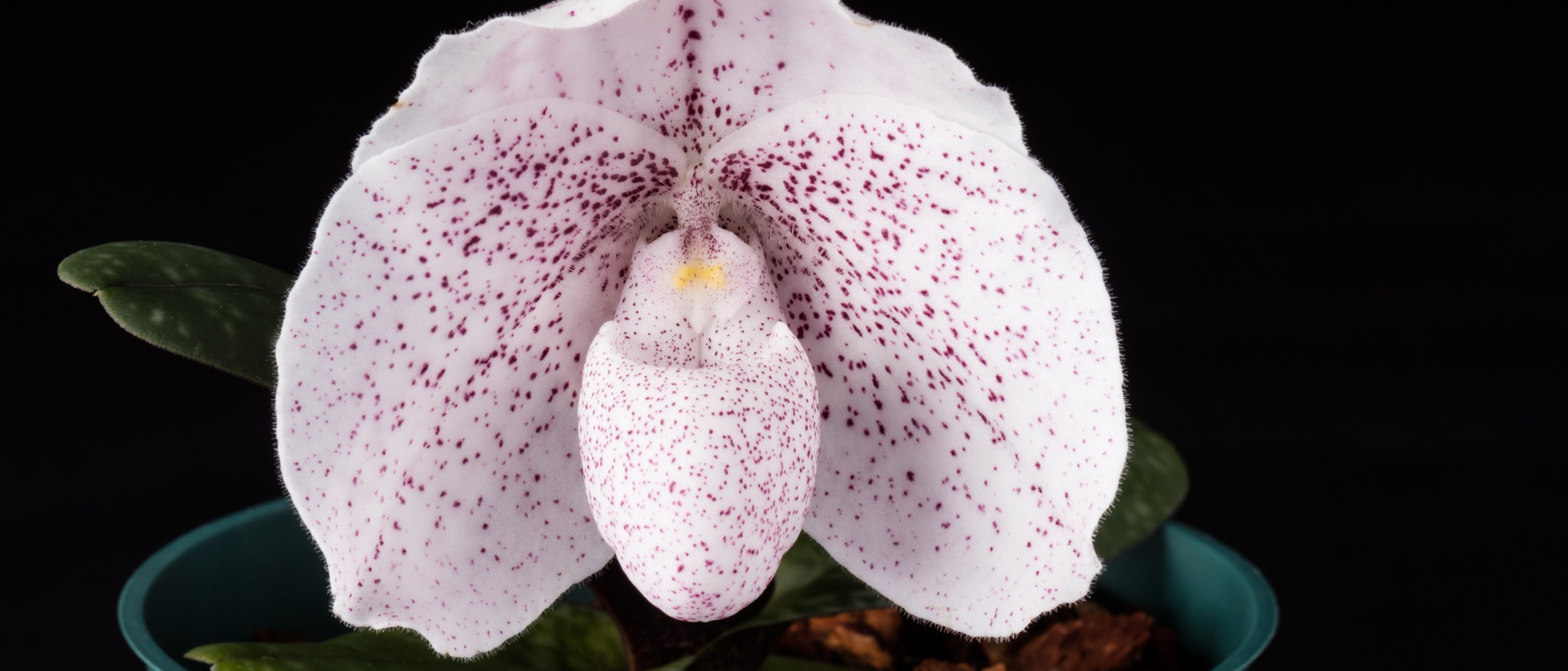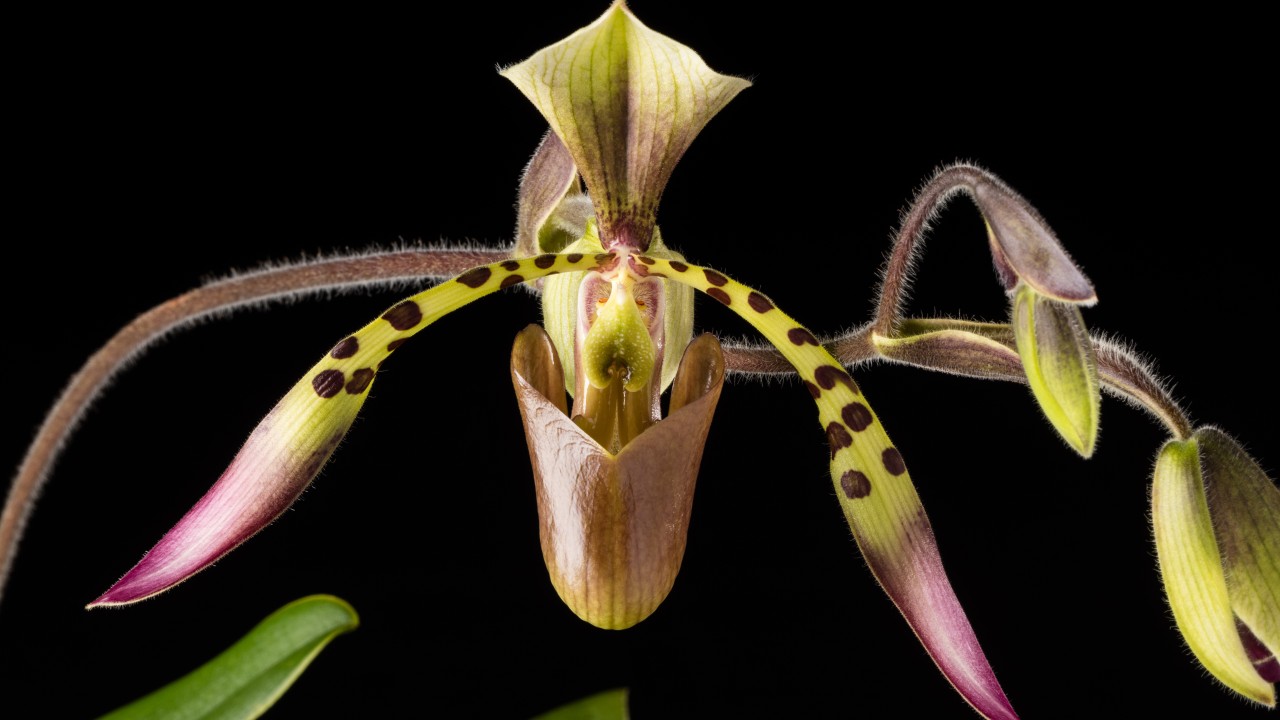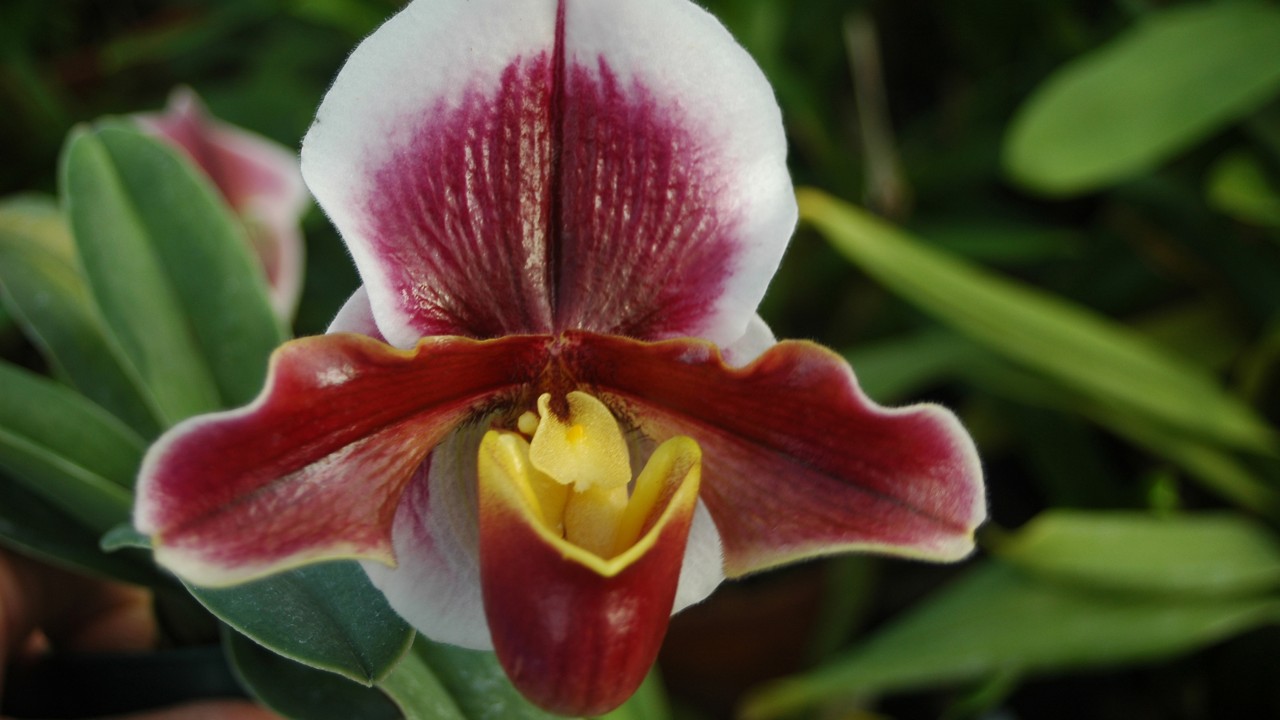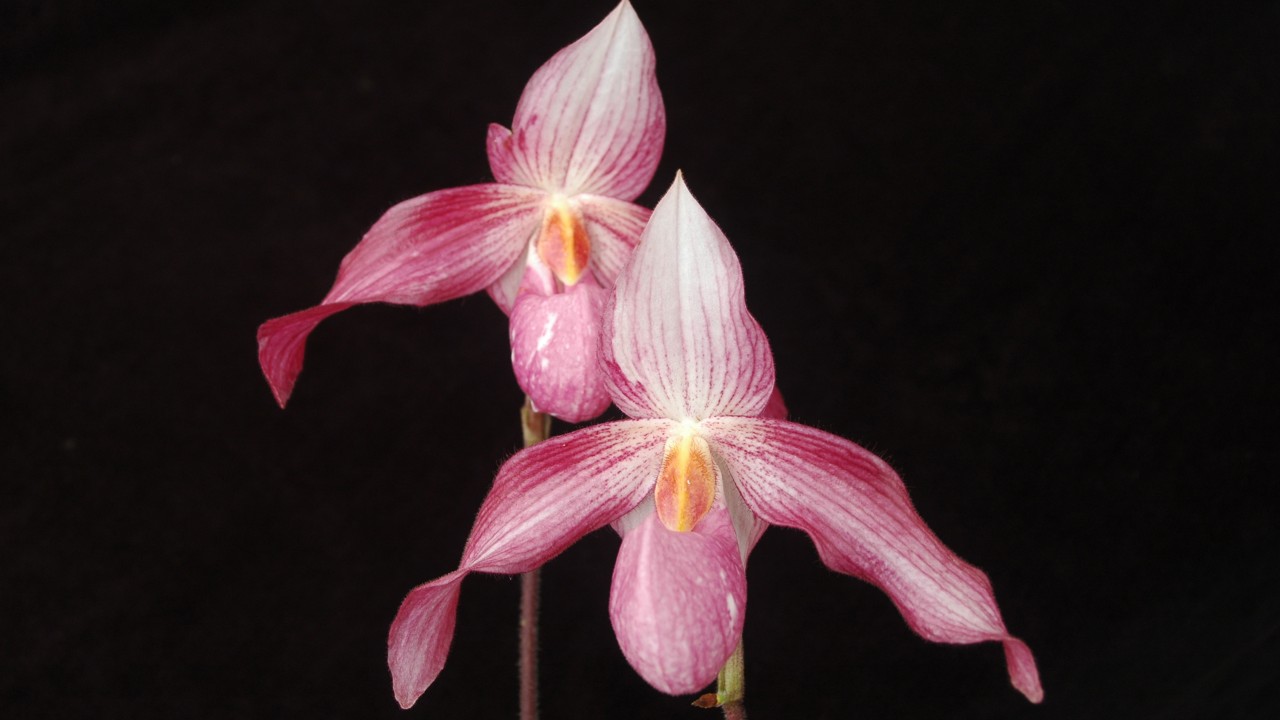
Care of Paphiopedilum
Common Name: Slipper orchids
Scientific Name: Paphiopedilum (paf-ee-o-PED-ee-lum)
Paphiopedilums are southeast Asian orchids which are native to humid forests. They are unique for many reasons: they are mostly terrestrial (grow in the ground) while the majority of orchids are epiphytes (grow in trees); they have unusual flowers with a single petal that takes the shape of a pouch; and they are difficult to clone, meaning that most are grown from seed into unique plants. Paphiopedilums are one of the most widely cultivated and hybridized orchids, and easily cared for. If you can grow an African violet, you can grow a Paphiopedilum.
Where should I put my orchid?
Paphiopedilums are low-light orchids, making them an easy orchid to cultivate at home. Hybridized varieties sold in stores grow well in typical home conditions, and many orchardists grow all of their Paphiopedilums in the same temperature range of about 60-80° F with good results. Place one near a slightly shaded east, south, or west window, or on an interior coffee table or counter. Paphiopedilums can even grow well under artificial lights. The leaves of this plant will tell you whether it is getting enough light or not. If the leaves have a slight red tint, the plant is getting too much light. If its leaves are a dark, lush green and the plant is not blooming, then it is not getting enough light. Like Goldilocks, a medium green is just right.
What about humidity?
Paphiopedilums like moderately humid environments ranging anywhere from 40-70% humidity. The humidity around an orchid can be increased with a small humidifier or by placing the plant atop a tray filled with pebbles and water.
How much water should I give it?
Paphiopedilums are unique from other orchids in that they do not have pseudobulbs, a water-storing stem. Psuedobulbs are to orchids as humps are to camels. Because Paphiopedilums do not have a way to store water long-term and don’t like to dry out entirely, they need to be watered slightly more frequently than other orchids. They should be watered every five days or so, depending on where they are located and what type of medium they are planted in. If they are planted in moss, water when the top feels dry. Do not use softened water, as the salts may damage the plant. Even though these orchids like to be damp, do not let them stand in water as this will cause their roots to rot.
My orchid has finished blooming – now what?
Once your plant has finished its 3-6 weeks of blooming, cut the spike down to the leaves and continue caring for it until it blooms again in about a year.



